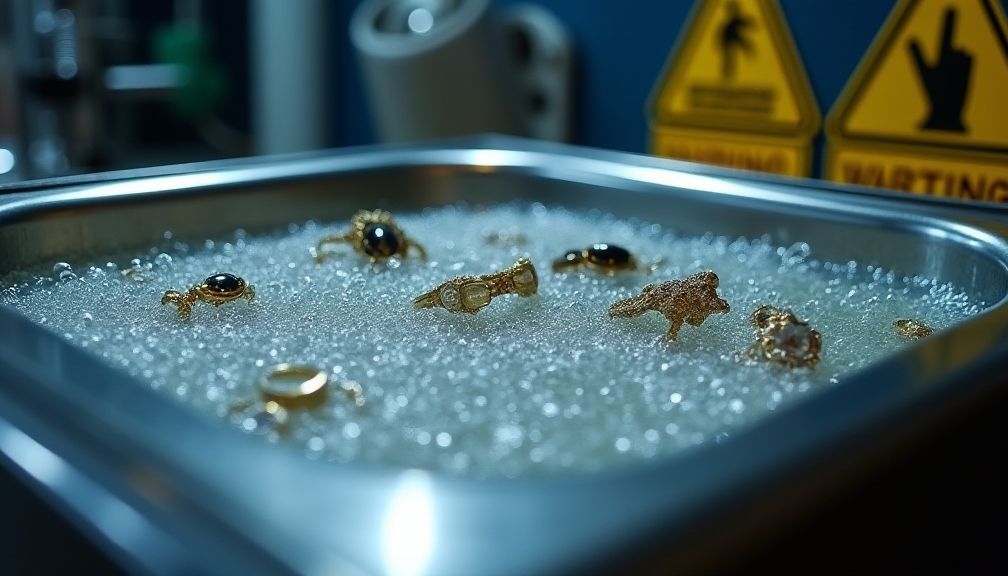Ultrasonic cleaners have gained popularity in recent years, touted for their ability to thoroughly clean a wide range of items—from jewelry to delicate electronic components. However, while these devices offer significant cleaning benefits, there are important safety considerations to keep in mind. In this article, we’ll explore the potential risks associated with ultrasonic cleaning and why it’s crucial to approach this technology with caution.
Understanding Ultrasonic Cleaners
First, let’s understand what ultrasonic cleaners are. These devices utilize high-frequency sound waves to create millions of tiny bubbles in a cleaning solution. When these bubbles implode, they produce a powerful scrubbing action, effectively removing dirt, grime, and contaminants from surfaces.
Ultrasonic cleaning is widely regarded as a superior cleaning method, especially for intricate and delicate items that traditional cleaning methods might damage. However, the very process that makes ultrasonic cleaners effective can also lead to various safety concerns.

Incompatibility with Certain Materials
One of the most notable risks associated with ultrasonic cleaning is the potential for material damage. Not all items are suitable for ultrasonic cleaning, and using this method on incompatible materials can cause irreparable harm.
For example, soft metals like gold and silver can become dulled or scratched, while certain plastics may warp or become discolored when exposed to the cavitation process. Additionally, porous materials such as some stones or wood can trap cleaning solution, leading to long-term damage.
Before using an ultrasonic cleaner, it’s vital to check whether the items you plan to clean are rated as safe for this type of cleaning. Manufacturers often provide guidelines regarding which materials can and cannot be cleaned safely.
Potential for Damage to Sensitive Parts
Beyond materials, ultrasonic cleaning can also pose risks for sensitive parts of an item. For instance, components such as electronics or delicate watch mechanisms may contain parts that are not designed to withstand the vigorous cleaning process.
Water can seep into minuscule openings, leading to corrosion or failure of electronic circuits. For watches, ultrasonic cleaning can loosen vital components or disrupt intricate mechanisms, causing malfunction.
To mitigate these risks, consider removing batteries, and sensitive parts, or securing them properly before cleaning, ensuring that you protect those elements that may be at risk.
Health Risks Associated with Ultrasonic Cleaning Solutions
Another area that requires careful consideration is the cleaning solutions used in ultrasonic cleaners. Many of these solutions contain harsh chemicals designed to enhance the cleaning process. While these chemicals can effectively remove tough grime, they can also pose health risks.
Exposure to certain ultrasonic cleaning solutions can lead to skin irritations, respiratory issues, or more severe reactions, particularly for individuals with allergies or compromised immune systems. Furthermore, improper disposal of these chemicals can have harmful environmental impacts.
Always prioritize safety by wearing gloves, goggles, and a mask when handling cleaning solutions. Seek out non-toxic, biodegradable cleaning products whenever possible to minimize health and environmental concerns.
Further Reading:
Noise Pollution
While this may not be a direct safety risk, the noise generated by ultrasonic cleaners can contribute to a bothersome and potentially harmful environment. The high-frequency sound waves produced during the cleaning process can be quite loud, which in a confined workspace can lead to noise pollution.
Repeated exposure to high noise levels can lead to hearing issues over time. It’s advisable to operate these machines in well-ventilated areas or use soundproofing measures when possible to reduce overall noise levels, safeguarding not just the cleaner’s user but those nearby as well.
Risk of Improper Use
Improper use of ultrasonic cleaners is another factor contributing to their safety risk. Users may overlook instructions or fail to fully understand how the device operates, leading to potentially unsafe situations.
Mismanagement of the cleaning time, frequency, and solution concentration can lead to inadequate cleaning or damage to items. Furthermore, overloading the cleaning tank can reduce cleaning efficiency and stress the machine, risking malfunction.
To avoid these problems, always read the manufacturer’s instructions, undergo training if necessary, and utilize the device as intended. Being informed ensures you’re maximizing cleaning potential while minimizing risks.

Alternatives to Ultrasonic Cleaning
If safety concerns about ultrasonic cleaning resonate with you, various alternatives exist that provide effective cleaning without many of the associated risks.
For jewelry, a soft brush and mild cleaning solution might suffice for routine cleanings. For electronics, specialized wipes designed for sensitive components can handle dirt and dust without risk. Traditional methods, although sometimes less efficient, can be safer for items that may suffer from ultrasonic cleaning.
Conclusion: Proceed with Caution
In conclusion, while ultrasonic cleaners offer remarkable cleaning power, they aren’t always safe. From material compatibility issues to health risks associated with cleaning solutions, these devices come with essential caveats. By remaining aware of these factors and adhering to best practices, you can safely incorporate ultrasonic cleaning into your routine. Always prioritize caution, research the items you intend to clean, and maintain a focus on safety to achieve the best results.
In the end, a cleaner is only as effective as the user’s understanding and approach to the device. Stay informed, stay safe, and ensure that your cleaning methods complement your commitment to maintaining your valuable items.








